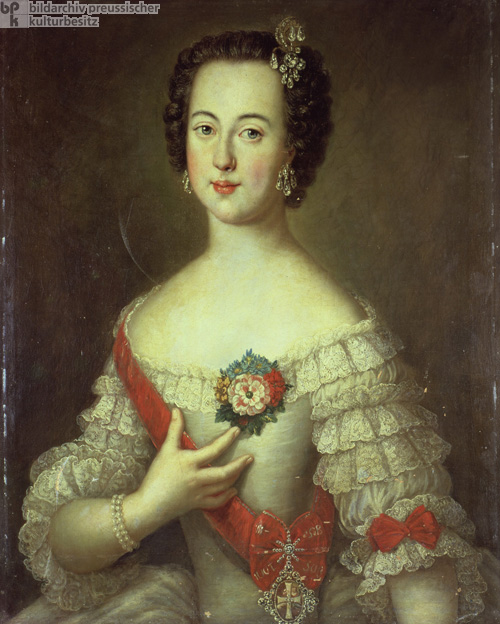|
Princess Sophie Friederike Auguste of Anhalt-Zerbst, later Catherine II of Russia (1745)
This portrait shows Princess Sophie Friederike Auguste of Anhalt-Zerbst (1729-96) in 1745, the year she married the heir to Russian throne, Karl Peter Ulrich von Schleswig-Holstein-Gottorf (1728-62). In July of 1762, only seven months after her husband had been crowned Peter III of Russia, she commissioned members of the imperial guard to depose her politically besieged spouse and then acquiesced to his assassination, whereupon she acceded to the Russian throne as Catherine II (“the Great”) of Russia (r. 1762-96). Over the course of her long reign, she became one of the major representatives of “enlightened absolutism” and pursued relationships with prominent Enlightenment thinkers, most famously Voltaire and Diderot. Despite her exposure to the social and philosophical currents of her day, she favored the noble class at the peasantry’s expense. Nonetheless, she initiated important reforms, including judicial improvements in the cities and land-settlement programs for European peasant-colonists, many from the German lands. The partitions of Poland (1772, 1793, 1795), which she undertook with Austria and Prussia, brought the borders of the Russian Empire into direct contact with Germany for the first time. Painting by Antoine Pesne (1683-1757), 1745.

|


